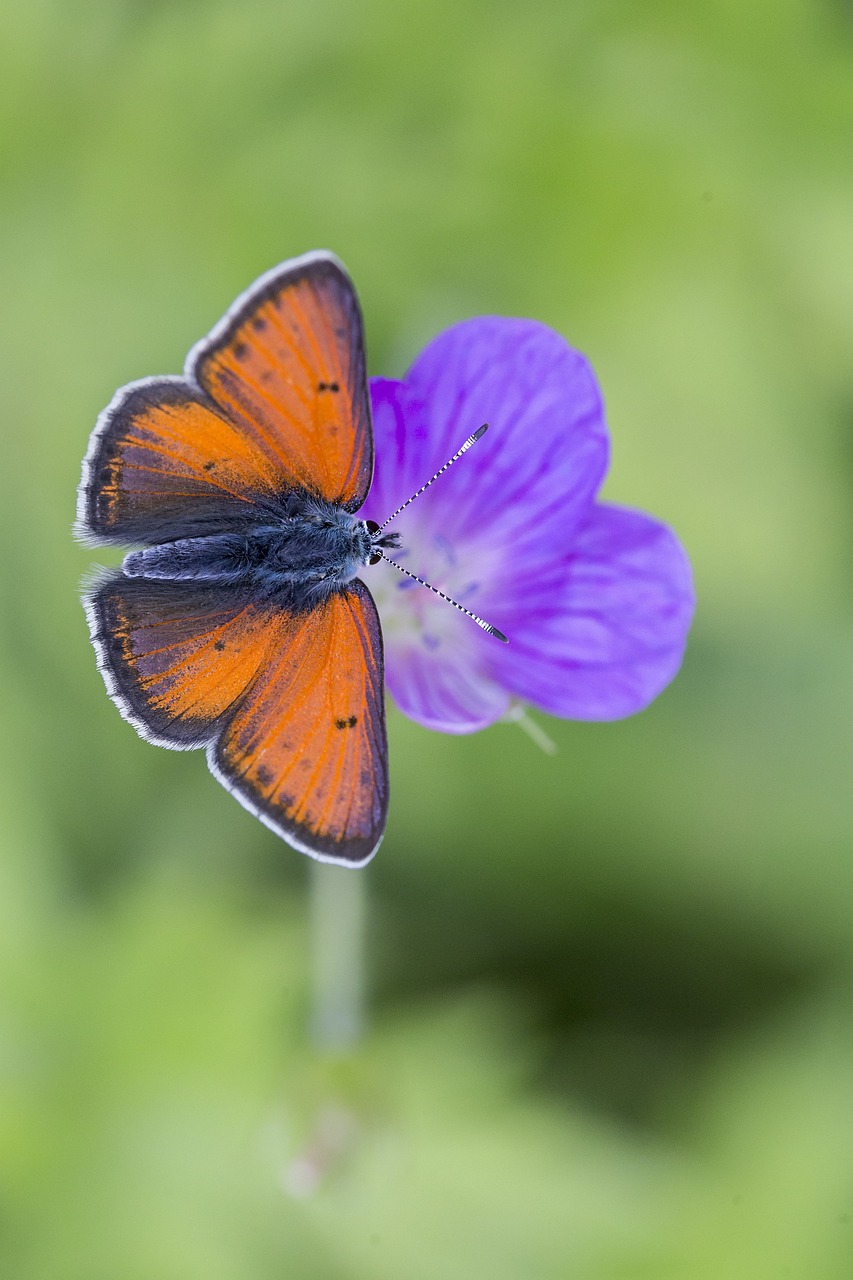The Purple-edged copper (Lycaena hippothoe) is a striking species of butterfly belonging to the family Lycaenidae, commonly known for its vivid colors and elegant appearance. This butterfly is native to parts of Europe and Asia and is especially notable for its unique colorations and patterns.
Description
- Size:
- Wingspan: The wingspan ranges from about 30-36 millimeters (1.2-1.4 inches).
- Body Length: The body length is proportionate to the wingspan, with a delicate and slender build.
- Coloration:
- Males: The males are characterized by their bright, metallic copper-colored wings with a distinctive purple edge. The upper side of the wings has a rich, warm copper hue, with the outer edge displaying a vibrant purple border.
- Females: Females are less bright than males, with more subdued copper colors and a less pronounced purple edge. They generally have a more mottled appearance, with brownish tones and some orange spots.
- Underside: Both sexes have a light brown underside with orange and white patterns. The hindwings have a series of small, dark spots which provide camouflage when the butterfly is resting.
Habitat
- Distribution: The Purple-edged Copper is found across a range of Europe, from the British Isles to Scandinavia and as far east as the Urals. It also appears in parts of Asia.
- Preferred Environment: This butterfly inhabits a variety of open, grassy habitats including meadows, heathlands, and clearings in woodlands. It is often seen in areas with abundant flowering plants.
Behavior and Ecology
- Feeding:
- Larvae: The caterpillars feed on various species of plants in the family Polygonaceae, including docks (Rumex) and sorrels (Oxalis).
- Adults: Adult butterflies feed on nectar from a variety of wildflowers, including clover, thistle, and knapweed.
- Life Cycle:
- Eggs: Eggs are laid on the food plants, usually on the underside of leaves.
- Larvae: The caterpillars are green with a few spots and feed on the host plants. They develop over several weeks.
- Pupation: Pupation occurs in a chrysalis stage, which is often camouflaged among the leaves or other plant debris.
- Adults: The butterflies emerge from the chrysalis and are active during the warmer months, usually from late spring to early autumn.
- Behavior:
- Flight: The Purple-edged Copper has a fluttering flight pattern and is often seen darting among flowers in its habitat.
- Activity: It is most active during the day, particularly in sunny weather. Males are known for their territorial behavior, often seen patrolling their territory in search of mates.
Conservation
- Status: The Purple-edged Copper is generally not considered endangered, but its population can be affected by habitat loss and changes in land management.
- Conservation Efforts: Maintaining and protecting its natural habitats, such as meadows and heathlands, is important for its conservation. Efforts to preserve these habitats help support healthy populations of this butterfly.
Observing Purple-edged Coppers
- Best Times: They are best observed from late spring to early autumn, during sunny and warm weather.
- Watching Tips: Look for them in open, grassy areas with plenty of flowering plants. Their striking colors make them relatively easy to spot when they are actively feeding.
Interesting Facts
- Coloration: The purple edge of the male’s wings is a result of light refraction, which creates a striking and iridescent appearance.
- Habitat Specificity: The species is often found in specific types of habitats, making it a good indicator of habitat quality and ecological health.
Summary
The Purple-edged Copper (Lycaena hippothoe) is a visually stunning butterfly known for its metallic copper wings with a purple edge. Found across Europe and parts of Asia, it thrives in open, grassy habitats and feeds on nectar and specific host plants. Its distinctive appearance and habitat preferences make it an interesting subject for butterfly enthusiasts and conservationists.
Visited 836 times, 6 visit(s) today
Views: 1214
Subscribe to the newsletter:
